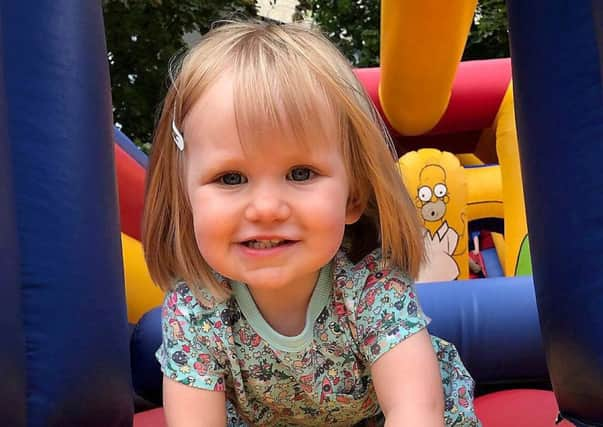Medics did not consider sepsis when treating tragic toddler Marcie


Marcie Tadman was being treated for pneumonia on the children’s ward at the Royal United Hospital in Bath when she suffered a fatal cardiac arrest.
The inquest at Avon Coroner’s Court heard doctors were treating pneumonia as the main cause of the two-year-old’s illness and had not considered sepsis.
Advertisement
Hide AdAdvertisement
Hide AdMarcie’s father James Tadman had taken her to the hospital’s emergency department on December 4 2017 because she had a cough, high temperature and had been vomiting.
When the toddler was admitted to the children’s ward a healthcare assistant and nurse completed a “sepsis sticker”, which flagged up the condition as a possible risk, triggering further assessments.
Dr John Ward, who was the first doctor to examine Marcie on the ward, said he did not recall the nursing staff raising the sepsis sticker with him.
He became concerned about Marcie that afternoon and asked registrar Dr Fran Hofmann to assess her.
Dr Hofmann said she was worried about the girl’s fast heart rate and low blood pressure and was considering sepsis but did not share her concerns.
She told the court she had “gone over a million times” why she was thinking about sepsis.
“I would say that the sepsis proforma was not something that was ingrained in our practice at that time,” Dr Hofmann said.
“It was developing. Practice is very different now. This is something where there has been massive training since Marcie’s case.
Advertisement
Hide AdAdvertisement
Hide Ad“She had been seen by seven doctors and no one filled it in. I am so sorry I didn’t fill that in but that is a reflection and not what was ingrained in the environment at that time.
“If I had filled it in, I still think my treatment plan would still have been the same but I would have made everybody else aware of what I was thinking.”
Dr Hofmann said at the 5pm handover to the evening medical team she expressed her concerns about the girl.
“When I left I was sure I had handed over my concerns and that she would be reviewed by that team at the immediate conclusion of the handover,” she said.
“I have had a lot of difficulty understanding what fell down from the 5pm handover because all the features were discussed and the plan was changed by doctors that had not seen Marcie and didn’t go on to see ...
“I have massive issues about that and I am happy to discuss at length.”
Fighting back tears, she added: “I want the family to understand that I absolutely thought ... when I left the hospital, I absolutely thought she would be reviewed after that 5pm handover.
“If I thought that wasn’t going to happen, I would never have left.”
Advertisement
Hide AdAdvertisement
Hide AdDr Hofmann said she was used to managing sepsis and the treatment Marcie received that day - use of oxygen, taking blood tests, giving a fluid bolus and administering intravenous antibiotics were all done.
“She didn’t look like a child in septic shock after she received the first fluid bolus, which was my reason for not giving a second one,” she said.
“Although I felt she didn’t need a second fluid bolus it was something I was considering and discussed at the 5pm handover and she was due a review.
“I accept we didn’t realise how sick she was. She didn’t look like a child in crashing septic shock.”
Marcie, who lived with her family in Bath, died shortly before 6am on December 5.
A post-mortem examination found Marcie had died from a Group A Streptococcus infection with secondary pneumonia.
The inquest continues.
